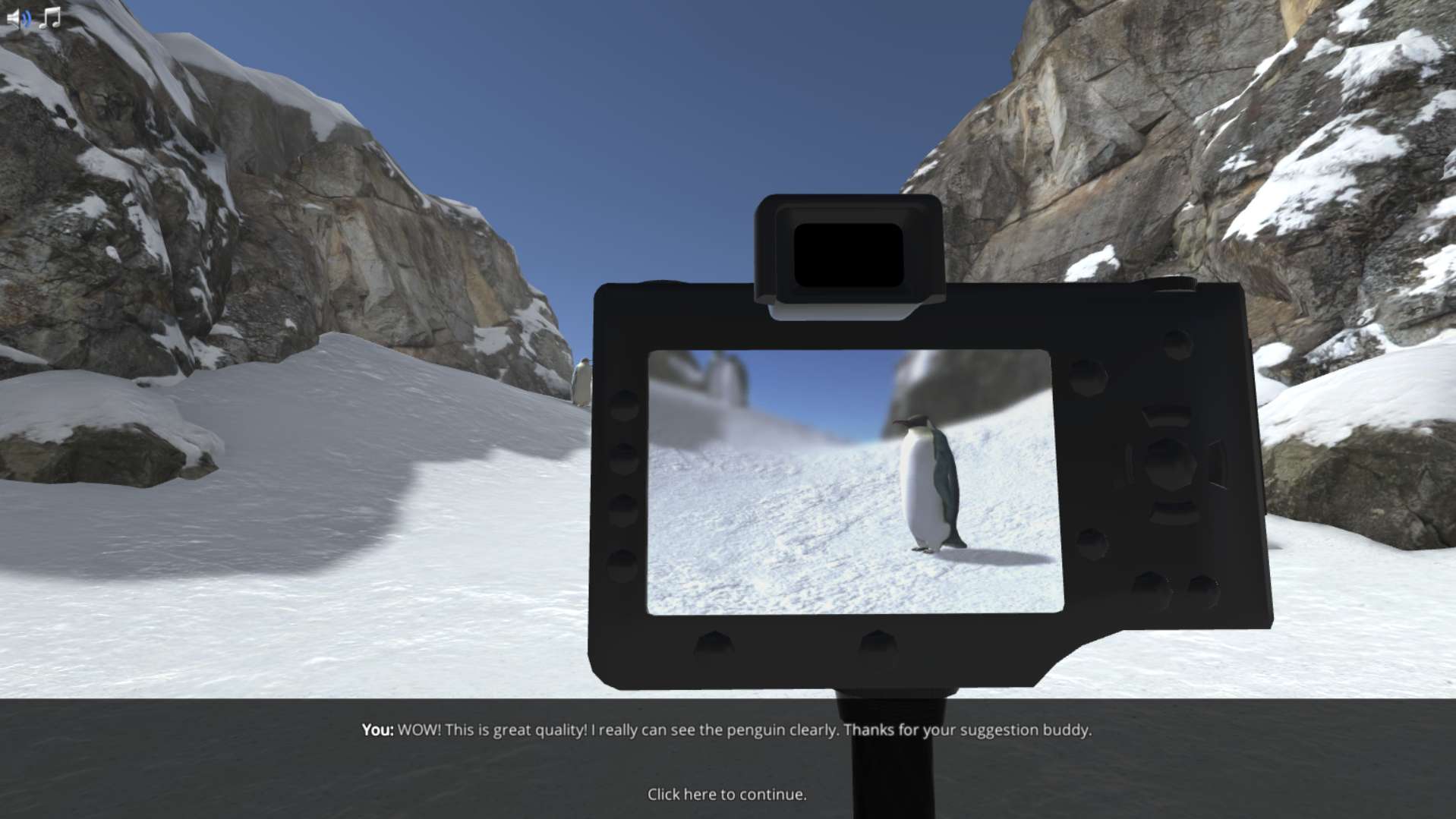Heading 1
Heading 2
Heading 3
Heading 4
Heading 5
Heading 6
Lorem ipsum dolor sit amet, consectetur adipiscing elit, sed do eiusmod tempor incididunt ut labore et dolore magna aliqua. Ut enim ad minim veniam, quis nostrud exercitation ullamco laboris nisi ut aliquip ex ea commodo consequat. Duis aute irure dolor in reprehenderit in voluptate velit esse cillum dolore eu fugiat nulla pariatur.
Block quote
Ordered list
- Item 1
- Item 2
- Item 3
Unordered list
- Item A
- Item B
- Item C
Bold text
Emphasis
Superscript
Subscript
About This Simulation
Learn how to use polarizing filters like real photographers do. Albert Einstein will help you shed light on the fascinating world of electromagnetic waves by playing with lasers, mirrors & polarizing filters.
Learning Objectives
- Define the wave/particle duality of light
- Use the electromagnetic spectrum to classify waves based on their wavelength and frequency
- Apply the law of reflection and refraction to predict how light interacts with interfaces
- Show the principles of linear polarization
- Use polarizing filters to adjust light intensity
About This Simulation
Lab Techniques
- Polarizing filters
- Optical table
Related Standards
- No direct alignment
- No direct alignment
- No direct alignment
Learn More About This Simulation
Light is everywhere around us. Not only does it help us see, but it also plays a key role in photography. In the Light and Polarization simulation you will meet Einstein who will introduce you to the the physics of light. Find out what light is, how it propagates, and how you can change its polarization using filters. You will become a light wizard and boost your photography skills by capturing the beauty of wildlife in a hostile environment like Antarctica.
Determine the source of electromagnetic waves
Join Einstein in the Light and Polarization lab and see how everyday objects produce waves of various frequencies and wavelengths that define the electromagnetic spectrum. Some of them are visible, others are not. But don’t worry, even though you cannot see them in real life, there are no restrictions in a virtual simulation!
Reflection and refraction
Learn how light is reflected and refracted when travelling from one medium to another. What happens to light when it hits a lake or ice? Here you will set up your own optical table with a laser, mirrors and glasses and become an expert in reflection and refraction.
Light polarization
From sunglasses to LCD technology, the applications of light polarization in our everyday life are endless! Here you will look at polarizing filters to learn the principles of light polarization, and you will use them to enhance the outcome of photography.
Are you ready to use science to get the best pictures?
For Science Programs Providing a Learning Advantage
Boost STEM Pass Rates
Boost Learning with Fun
75% of students show high engagement and improved grades with Labster
Discover Simulations That Match Your Syllabus
Easily bolster your learning objectives with relevant, interactive content
Place Students in the Shoes of Real Scientists
Practice a lab procedure or visualize theory through narrative-driven scenarios


FAQs
Find answers to frequently asked questions.
Heading 1
Heading 2
Heading 3
Heading 4
Heading 5
Heading 6
Lorem ipsum dolor sit amet, consectetur adipiscing elit, sed do eiusmod tempor incididunt ut labore et dolore magna aliqua. Ut enim ad minim veniam, quis nostrud exercitation ullamco laboris nisi ut aliquip ex ea commodo consequat. Duis aute irure dolor in reprehenderit in voluptate velit esse cillum dolore eu fugiat nulla pariatur.
Block quote
Ordered list
- Item 1
- Item 2
- Item 3
Unordered list
- Item A
- Item B
- Item C
Bold text
Emphasis
Superscript
Subscript
A Labster virtual lab is an interactive, multimedia assignment that students access right from their computers. Many Labster virtual labs prepare students for success in college by introducing foundational knowledge using multimedia visualizations that make it easier to understand complex concepts. Other Labster virtual labs prepare learners for careers in STEM labs by giving them realistic practice on lab techniques and procedures.
Labster’s virtual lab simulations are created by scientists and designed to maximize engagement and interactivity. Unlike watching a video or reading a textbook, Labster virtual labs are interactive. To make progress, students must think critically and solve a real-world problem. We believe that learning by doing makes STEM stick.
Yes, Labster is compatible with all major LMS (Learning Management Systems) including Blackboard, Canvas, D2L, Moodle, and many others. Students can access Labster like any other assignment. If your institution does not choose an LMS integration, students will log into Labster’s Course Manager once they have an account created. Your institution will decide which is the best access method.
Labster is available for purchase by instructors, faculty, and administrators at education institutions. Purchasing our starter package, Labster Explorer, can be done using a credit card if you are located in the USA, Canada, or Mexico. If you are outside of North America or are choosing a higher plan, please speak with a Labster sales representative. Compare plans.
Labster supports a wide range of STEM courses at the high school, college, and university level across fields in biology, chemistry, physics, and health sciences. You can identify topics for your courses by searching our Content Catalog.















